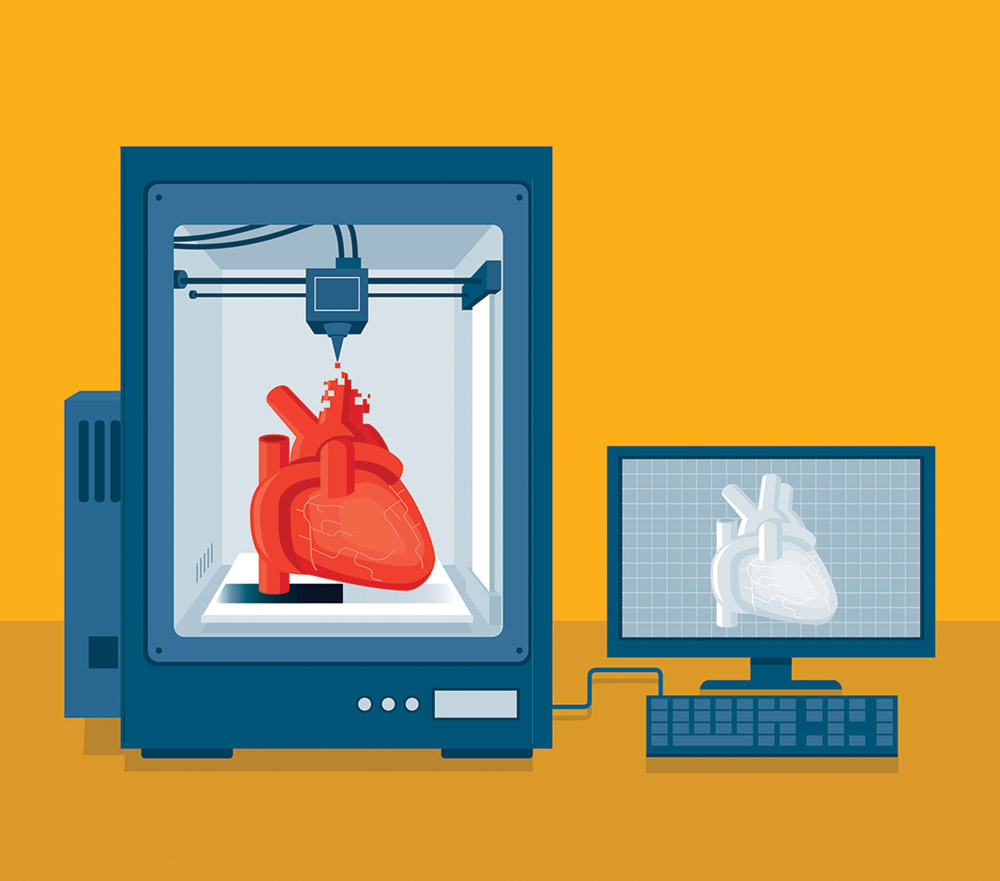The Next Dimension
3D printing seems like science fiction come to life.
“It’s kind of Star Trek–like,” says Dan Thoma MS’88, PhD’92, director of the Grainger Institute for Engineering, who has researched the technology for 25 years.
Remember when Captain Picard commanded the replicator on the Enterprise to make a cup of Earl Grey tea?
“Well, we can’t make the tea, but we can [print] the cup,” Thoma says.
There are several steps to 3D printing an object: convert a physical model into a virtual design, translate it into a software that reads the object’s surfaces and stores information about its shape, and then use a second software to divide the digital model into sections and instructions the printer can understand. Once the printer is set up, it reads the digital language and prints the object in layers — a cup would have roughly 10,000 layers.
The concept is simple enough, Thoma says. Conventional manufacturing methods cut components from blocks of material and sometimes weld multiple pieces together. But 3D printing builds an entire piece from the ground up, allowing users to create new materials and design internal structures.
“You get increased functionality that you can’t get any other way,” Thoma says.
Still, 3D printing has been overhyped, he adds. It takes training to use programming software, operate the machines, pick material, and choose from dozens of different printing techniques. The technology is also expensive and can’t produce high volumes. Extensive finishing and testing to control defects on a single part can cost thousands, if not millions, of dollars.
“Even if I’m [just] making a coffee cup, and I have hot coffee [in it], I don’t want the handle breaking,” Thoma says.
Whatever its limitations, the possibilities still seem endless. There’s hope in the medical industry for printing 3D organs.
“I don’t know what the next great idea is going to be,” Thoma says. “I just hope [it comes from] one of my students.”
Published in the Winter 2018 issue


Comments
No comments posted yet.